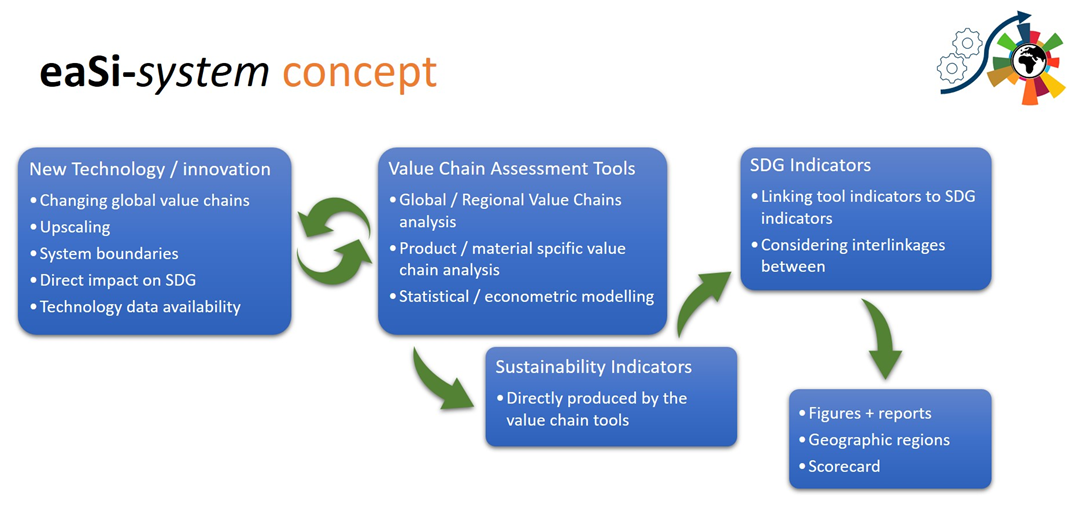The 2030 Agenda for Sustainable Development describes the sustainable development goals, SDGs, which consist of 17 goals and 169 targets. These address the major challenges in our world today, such as eradicating poverty, protecting the environment and promoting peace. Progress towards achieving the targets is measured through 231 indicators. Many businesses have started integrating the SDGs into their strategies to ensure future competitiveness. However, decision makers struggle to relate the goals and targets to their business models and operations, and to measure the impacts on SDGs. SINTEF is involved in technology-, process- and product development at early stages when decision spaces are open and various approaches are considered. Comprehensive and systematic early-stage impact assessments of several approaches can help select solutions that are not only technically feasible, but also sustainable, before much effort is spent on their realization.
The eaSi-system project will develop a generic platform for assessing societal impacts of emerging technologies and structural change in terms of the SDG indicators. We will develop new methods and new combinations of existing modelling tools, codes and data for sustainability analysis, making this type of analysis more systematic and easier accessible within and outside SINTEF, enabling us to realize SDG impact assessment projects.
The eaSi-system analysis begins with the new technology or process. First, relevant aspects such as system boundaries, technology data, upscaling and direct effects on the SDGs are mapped. The next step is to analyse how the new technology affects global value chains, and further consequences of the technology, and the results are then linked to the SDG indicators. How the different SDGs influence each other is also considered. Finally, standardised reports, figures and scorecards are generated, where results can be broken down on geographic regions and different time scales.

eaSi-system will be tested on four different case studies:
- Case study 1: Non-fossil reductants in metal production: the case of silicon. A low TRL technology.
- Case study 2: New concepts and materials for solar cells. A medium TRL technology.
- Case study 3: Full national upscaling of optical waste sorting technologies to increase plastics recycling. A high TRL technology.
- Case study 4: Industrial development and upscaling of offshore wind. A multi-TRL technology.
The case studies reflect technologies at different technology readiness levels (TRL) and magnitudes, and give the opportunity to apply eaSi-system both during technology development and technology diffusion.

